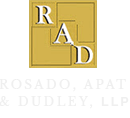Non-Compete Agreements, Part 2
Non-compete cases are very fact specific. Whether the agreements have similar language or not, the underlying facts will determine how the case is decided. The Court will look at the industry, the work actually done and whether trade secrets or confidential information is involved.
Other considerations include confidential customer lists and if areas of special proprietary or unique services were rendered.
Therefore, a close reading of the complaint is a must. Time spent with your client at the outset to understand what the company does, what they did and what they are accused of doing will go a long way towards evaluating the case. It must be determined if anything your client has done will ultimately be considered interfering with a valid business interest of the employer.
This is time well spent and will give your client confidence that there is a logical approach to these cases and determining the merits of the case and what defenses are available in their specific case.
On a case I handled years ago the client, an economist, had a non-compete agreement with his employer and was accused of providing information to a client of the employer who was looking to hire him away.
The information involved among other things an econometric model. The employer argued that these communications by the employee undermined the employer’s ability to resell that particular analysis to this client in the future.
The employer argued that the program was based on a unique economic algorithm that had been developed by my client, and the model was the property of the employer. The model predicted the rate at which commercial backed mortgages would fail in various locations across the country.
The client was very capable and did create sophisticated econometric models while employed with the company. For this reason, we were concerned that we were dealing with a trade secret, a unique formula and it would therefore be considered confidential/proprietary information.
This is what the employer asserted during the litigation. The client insisted that this particular model was nothing more than a “Monte Carlo” simulation and was not proprietary. Needless to say, we were confused; what in the world is a Monte Carlo simulation!
Up to this point we thought Monte Carlo was a place in Monaco or an American made muscle car. We discovered that Monte Carlo is a computerized mathematical technique for predicting risk in a quantitative way. It has existed for many years and is taught in college level economic classes. It is a risk analysis simulation that provides a range of possible outcomes for a given question posed or course of action chosen.
Of course, before running into court to argue: “Judge, this is a simple Monte Carlo simulation, it’s been used by scientists since the creation of the atom bomb,” (which apparently it was); we spoke to an economist and confirmed what our client was saying. After speaking to the independent economist he confirmed what our client had told us about Monte Carlo.
We were confident that this portion of the employer’s complaint to the extent that they based it upon a trade secret or confidential information would be tough for the employer to prove.
Thankfully with the testimony of our expert economist, we were proven correct at trial. If we had made a snap decision on this we would have been thinking complex econometric algorithm, this must be a proprietary trade secret.
Returning to the law, the Court of Appeals in BDO Seidman v. Hirshberg 93 N.Y.2d 382, 712 N.E.2d 1220, 690 N.Y.S.2d 854 (Ct. of Appls. 1999) continues to hold:
New York has adopted this prevailing standard of reasonableness in determining the validity of employee agreements not to compete. “In this context a restrictive covenant will only be subject to specific enforcement to the extent that it is reasonable in time and area, necessary to protect the employer’s legitimate interests, not harmful to the general public and not unreasonably burdensome to the employee” (Reed, Roberts Assocs. v. Strauman, 40 N.Y.2d 303, 307, 386 N.Y.S.2d 677, 353 N.E.2d 590)(Ct. of Appls. 1976).
In general, we have strictly applied the rule to limit enforcement of broad restraints on competition. Thus, in Reed, Roberts Assocs., supra, we limited the cognizable employer interests under the first prong of the common-law rule to the protection against misappropriation of the employer’s trade secrets or of confidential customer lists, or protection from competition by a former employee whose services are unique or extraordinary. (40 N.Y.2d, at 308, 386 N.Y.S.2d 677, 353 N.E.2d 590)(Ct. of Appls. 1976).
Wrapping Up Non-Compete Agreements In New York
The take home message is that working with generalities in the area of non-compete agreements can be dangerous.
There are many factors that can be relevant in a particular non-compete case. Spending time with the client to understand what they do for a living and what they did for their employer which is the subject of the lawsuit is an absolute necessity.
Attention to the details is crucial for the best analysis at the early stages of the case when your client needs it the most.
Editor’s Note: Richard H. Apat is a partner in the firm of Rosado, Apat & Dudley, LLP, with offices in Freeport and the Bronx.









